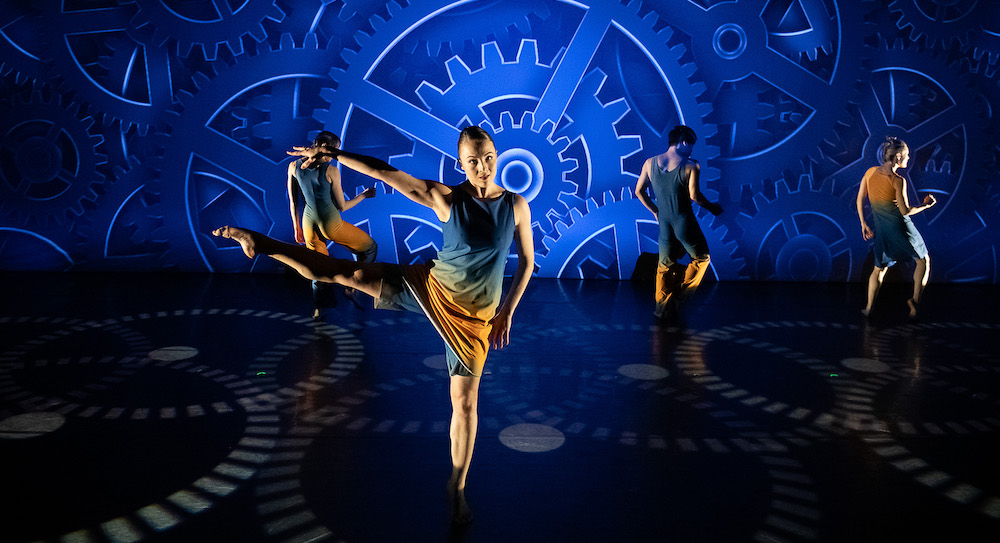Baruch Performing Arts Center, New York, NY.
March 6, 2020.
Hindsight marks 20 years of dancing for Amanda Selwyn Dance Theatre. An accumulation of her works from the past two decades, the piece is a mix of repertory underlined by a consistent style.
Based on straightforward modern lines and synchronized group work, Selwyn’s choreography is structurally simple. Dancers face front to perform movement, and rarely travel through the space. It is matter of fact, a presentation of dance. The dancers’ faces mirror this, for the most part remaining collected and focused. Most emotion is expressed through extension in the upper body, reaching through the arms in a fusion of lyrical and modern. The dancers are all clearly technically trained and, for the most part, minimized wobbling in somewhat static choreography.
But every so often, in pieces with jazz influence or looser, more contemporary inspirations, the dancers’ artistry was allowed to peak through. With arms wrapped tightly around their shoulders, the dancers shake as if trying to unravel themselves, moving from their center for the first time that evening. The movement feels less presentational, more honest. Flashes of that artistry would appear throughout the 55-minute performance, whether in partnering work where the dancers connected with each other, or moments where they felt connected to a certain movement, and melted into it. These moments stood out from the rest, begging to be connected. Only a few of the dancers had danced for Selwyn for any significant portion of the company’s 20 years, making it an additional challenge for them to connect to the history of the movement.
Lighting consistently plays a driving role in Hindsight. Well designed and timed, it gives shape to both the stage and the dancing. Projections also contributed to the overall experience. From simple lines of light, to complex patterns, to movie clips of the dancers themselves. The drawback of projections from 20 years ago is that they can look dated, often like a computer screensaver from the early 2000s, distracting from the dancing.
As with any collection of repertory, and especially one spanning 20 years, choreographic habits become apparent. The tempo and spacing of the choreography remained consistent throughout the night. Selwyn often includes props in her work, although they aren’t always fully integrated into the movement. Props were carried on and off stage mid-performance, sometimes carried on and not addressed until much later, and only briefly. In one piece, the dancers held small glowing orbs as they moved but did little with them. In another, each dancer placed a disk that emitted a vertical glow of light at their feet, but only danced around them, never playing with the light.
But Selwyn also breaks habits, and tries new techniques. She has experimented through the years with having her dancers vocalize, with gestural phrases, with projected image. There are group sections, cannon sections, recurring motifs and phrasework. Seeing all of these unconnected, one after another in one evening-length piece would feel a little like a checklist of choreographic tools, if it weren’t for the understanding that Hindsight is an amalgamation of years of performances and research into these methods when they were new ideas.
And that is the interesting thing about Amanda Selwyn Dance Theatre. So few dance companies are able to hit their 20-year mark. Selwyn Dance has existed through so many trends in the dance world, and has such a clear and neutral choreographic base, it’s almost possible to map a timeframe of those influences on it. When taken in context with the times and contexts these pieces were created in, and the sheer fact that the company has been around for 20 years, Hindsight is a look back on two successful decades of a dance, a feat for any company.
By Holly LaRoche of Dance Informa.















